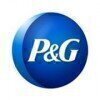
i
Voltas
Filter interviews by
Voltas Safety Officer Interview Questions and Answers for Experienced
Voltas Safety Officer Interview Experiences for Experienced
2 interviews found

(2 Questions)
- Q1. What is the Safety
- Ans.
Safety refers to the measures and precautions taken to prevent accidents, injuries, and hazards in a particular environment.
Safety involves identifying potential risks and implementing strategies to mitigate them.
It includes creating and enforcing safety policies and procedures.
Safety officers conduct inspections, train employees, and investigate incidents.
Examples of safety measures include wearing personal protective...
- Q2. What is the risk
- Ans.
The risk refers to the potential for harm or loss that may arise from a hazardous situation or activity.
Risk is an inherent part of any workplace or activity and must be identified, assessed, and managed.
It involves evaluating the likelihood and severity of potential hazards and taking appropriate measures to control or mitigate them.
Examples of risks in a safety officer role may include workplace accidents, exposure t...
Interview Preparation Tips
I applied via Naukri.com and was interviewed before Aug 2020. There were 5 interview rounds.
Interview Questionnaire
1 Question
- Q1. Various technical questions.
Interview Preparation Tips
Top trending discussions






Interview questions from similar companies

Safety Officer Interview Questions & Answers
Godrej & Boyce Manufacturingposted on 20 Sep 2023
I applied via Naukri.com and was interviewed in Aug 2023. There were 4 interview rounds.

Aptitude test related to EHS field
(3 Questions)
- Q1. Technical round related to safety
- Q2. What is confined space
- Ans.
Confined space is an area that is not designed for continuous occupancy, has limited entry and exit points, and may have hazardous conditions.
Limited entry and exit points
Not designed for continuous occupancy
May contain hazardous conditions such as poor ventilation, toxic gases, or engulfment hazards
- Q3. What is the process of demolition work
- Ans.
Demolition work involves planning, preparation, and execution of tearing down structures safely.
Obtain necessary permits and approvals
Survey the site for potential hazards
Remove hazardous materials like asbestos
Establish exclusion zones for safety
Use appropriate equipment like excavators or wrecking balls
Follow proper disposal procedures for debris
Ensure proper communication and coordination among team members
(1 Question)
- Q1. Salary discussion

I applied via Referral and was interviewed before Oct 2022. There were 3 interview rounds.

(2 Questions)
- Q1. Previous experience
- Q2. Education background
(1 Question)
- Q1. Knowledge about safety

I applied via Approached by Company
(4 Questions)
- Q1. Ehs longform please let me
- Q2. What is fire please tell me
- Ans.
Fire is a rapid chemical reaction that releases heat, light, and various gases.
Fire is a result of the combustion process, where a fuel source combines with oxygen in the presence of heat to produce flames.
It requires three elements to sustain: fuel, oxygen, and heat.
Examples of fuel sources include wood, paper, gasoline, and natural gas.
Fire can spread rapidly and pose a significant risk to life and property if not co...
- Q3. How many types of fire extinguisher
- Ans.
There are five main types of fire extinguishers: water, foam, dry powder, CO2, and wet chemical.
Water fire extinguishers are suitable for Class A fires involving solid materials like wood or paper.
Foam fire extinguishers are effective for Class A and B fires involving flammable liquids like petrol or oil.
Dry powder fire extinguishers are suitable for Class A, B, and C fires involving flammable gases like propane.
CO2 fi...
- Q4. 4 types types
- Ans.
The 4 types of safety hazards are physical, chemical, biological, and ergonomic.
Physical hazards include slips, trips, falls, and machinery accidents.
Chemical hazards involve exposure to harmful substances like gases, liquids, or solids.
Biological hazards come from exposure to viruses, bacteria, fungi, and other living organisms.
Ergonomic hazards result from poor workstation design, repetitive tasks, or improper liftin
Very nice I wood like

I appeared for an interview before Apr 2024, where I was asked the following questions.
- Q1. What is TBSC ?
- Q2. Oxygen level required confined space
- Ans.
Confined spaces require oxygen levels between 19.5% and 23.5% for safe entry and work.
Oxygen levels below 19.5% can lead to asphyxiation.
Oxygen levels above 23.5% increase fire and explosion risks.
Regular monitoring of oxygen levels is essential in confined spaces.
Examples of confined spaces include tanks, silos, and tunnels.
- Q3. Procedure to make Risk assessment
- Ans.
Risk assessment involves identifying hazards, evaluating risks, and implementing control measures to ensure safety.
Identify hazards: Recognize potential sources of harm, such as machinery, chemicals, or work practices.
Evaluate risks: Assess the likelihood and severity of harm from identified hazards, using a risk matrix.
Implement control measures: Develop strategies to eliminate or reduce risks, such as safety training...
- Q4. ISO full form
- Ans.
ISO stands for International Organization for Standardization, which develops and publishes international standards.
Founded in 1947, ISO is an independent, non-governmental international organization.
ISO standards cover various fields, including quality management (ISO 9001) and environmental management (ISO 14001).
ISO ensures consistency and quality across products and services globally.
ISO standards are developed thr...
- Q5. Classified the fire
- Q6. Classified the hazard
- Q7. Classified the fire extinguishers
- Ans.
Fire extinguishers are classified based on the type of fire they are designed to combat, ensuring effective fire suppression.
Class A: For ordinary combustibles like wood and paper (e.g., water extinguishers).
Class B: For flammable liquids such as gasoline and oil (e.g., foam extinguishers).
Class C: For electrical fires (e.g., CO2 extinguishers).
Class D: For combustible metals like magnesium (e.g., dry powder extinguish...
- Q8. The function of the over hoist limit switch
- Ans.
The over hoist limit switch prevents a hoist from lifting loads beyond a safe height, ensuring operational safety.
Acts as a safety mechanism to stop the hoist when the load reaches a predetermined height.
Prevents potential accidents or equipment damage by avoiding overextension.
Commonly used in cranes and elevators to ensure safe operation.
Example: In a construction crane, if the load reaches the maximum height, the sw
- Q9. Types of permit
- Ans.
Permits ensure safety in hazardous work environments, regulating activities like hot work and confined space entry.
Hot Work Permit: Required for activities like welding or cutting that can ignite flammable materials.
Confined Space Permit: Needed for work in areas with limited entry and exit, ensuring safety measures are in place.
Electrical Work Permit: Ensures safety protocols are followed when working on or near elect...
- Q10. Responsibility of safety officer
- Ans.
A Safety Officer ensures workplace safety by implementing policies, conducting training, and monitoring compliance with regulations.
Conduct regular safety inspections to identify hazards, e.g., checking for proper use of personal protective equipment (PPE).
Develop and implement safety training programs for employees, such as fire safety drills and emergency response training.
Investigate accidents and incidents to deter...
Interview Preparation Tips

I appeared for an interview in Dec 2021.
Interview Preparation Tips

I applied via Walk-in and was interviewed in Jul 2021. There was 1 interview round.
Interview Questionnaire
1 Question
- Q1. About my experience & safety related questions and about safety documentation
Interview Preparation Tips

I applied via Referral and was interviewed before Jan 2022. There was 1 interview round.
(2 Questions)
- Q1. Previous working details salary leave and reason of retrenchment
- Q2. Why u want to join our organization and what u expect from us and salary..
Interview Preparation Tips

I applied via Campus Placement and was interviewed in Jul 2021. There was 1 interview round.
Interview Questionnaire
2 Questions
- Q1. What is the IRC67 please explain ?
- Ans.
IRC67 is a code for safety requirements for passenger ships.
IRC stands for International Code of Safety for Ships Carrying Passengers
IRC67 specifically refers to the 1967 version of the code
It outlines safety requirements for passenger ships, including fire safety, life-saving equipment, and stability
The code is regularly updated to reflect new safety standards and technologies
- Q2. What is the hira ?
- Ans.
HIRA stands for Hazard Identification and Risk Assessment.
HIRA is a systematic process of identifying potential hazards and assessing the associated risks.
It involves identifying the hazards, evaluating the risks, and implementing control measures to mitigate the risks.
HIRA is an important tool for ensuring workplace safety and preventing accidents.
Examples of hazards that may be identified through HIRA include chemica...
Interview Preparation Tips
Skills evaluated in this interview
Voltas Interview FAQs
Tell us how to improve this page.
Voltas Interviews By Designations
- Voltas Assistant Manager Interview Questions
- Voltas Service Engineer Interview Questions
- Voltas Safety Officer Interview Questions
- Voltas Site Engineer Interview Questions
- Voltas AC Technician Interview Questions
- Voltas Management Trainee Interview Questions
- Voltas Design Engineer Interview Questions
- Voltas Sales Executive Interview Questions
- Show more
Interview Questions for Popular Designations
- Safety Supervisor Interview Questions
- Senior Safety Officer Interview Questions
- Fire & Safety Officer Interview Questions
- Safety Engineer Interview Questions
- Safety Manager Interview Questions
- Drug Safety Associate Interview Questions
- Safety Supervisor, Safety Officer Interview Questions
- Safety Executive Interview Questions
- Show more
Voltas Safety Officer Interview Process for Experienced
based on 1 interview
Interview experience
Interview Questions from Similar Companies
Fast track your campus placements
Voltas Safety Officer Reviews and Ratings
based on 54 reviews
Rating in categories
|
Assistant Manager
401
salaries
| ₹4 L/yr - ₹16.6 L/yr |
|
Service Engineer
213
salaries
| ₹1.5 L/yr - ₹9.5 L/yr |
|
AC Technician
186
salaries
| ₹1 L/yr - ₹6 L/yr |
|
Safety Officer
154
salaries
| ₹2.8 L/yr - ₹7 L/yr |
|
Senior Engineer
148
salaries
| ₹3.5 L/yr - ₹12 L/yr |

Vivo

OPPO

Dell

LG Electronics
- Home >
- Interviews >
- Voltas Interview Questions >
- Voltas Safety Officer Interview Questions for Experienced















